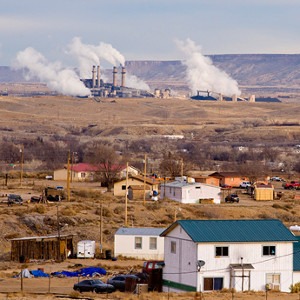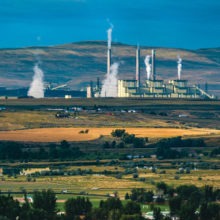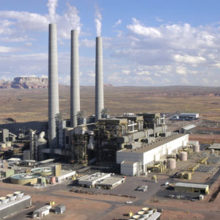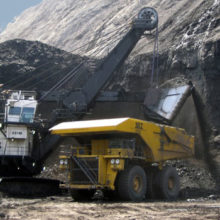- In the West, 18 coal-fired power plants have recently retired or are scheduled to retire generators by 2025.
- Unfortunately, community transition planning is occurring on an ad hoc basis and is largely uncoordinated.
- For example, no community had a dedicated transition fund at the time plant closure is announced.
- The 12 existing transition plans also show mixed results in following best practices related to economic development, reclamation, and community resilience.
Context Matters for Transition Planning
The research paper described here begins by assessing the policy and economic context within which the energy transition is occurring and within which economic transition plans can be analyzed, including assessing coal markets, the West’s regional economic geography, planning environment, and fiscal policies related to coal.
Changing Coal Markets
Coal production in the West boomed in the 1970s as coal-fired generation, transmission, and mining capacity expanded to meet increasing energy demand and respond to the national energy crisis. States worked together to ensure the buildup was facilitated on terms that would benefit the region and the region’s workers, including high severance taxes, new permanent savings funds, and new environmental and mine reclamation standards.

Today the West’s coal infrastructure is nearing end of life and is being replaced with cheaper and cleaner natural gas and renewable generation capacity. At the time of this research, 18 major western coal plants were scheduled to retire in part or in full. The closures are due to a combination of market forces—relatively low-cost natural gas and renewable energy sources, flat energy demand, an aging coal-fired power plant fleet—and regulations, including recent mercury and air toxics standards (the MATS rule).
Changing Economic Geography
Coal plants in the West are closing across a diverse geographic region: some plants are located within or adjacent to major cities while others are in remote communities more reliant on the coal plants for employment, income, and tax revenue. The effects of closures will be felt most acutely in these remote locations and where opportunities for economic transition also are more limited.
The paper categorized plants based on their access to markets: 1. remote plants located in isolated communities (these plants are most exposed to risks of employment and revenue loss); 2. remote plants in metro or connected counties (these plants are exposed to employment impacts but may have revenue advantage due to the larger county tax base); and 3. plants located in metro and connected counties that are located in or adjacent to major population centers.
Fragmented Planning Environment
The earlier regional consensus of the coal-buildup era has changed from cooperation among states to competition between them. Deregulation of energy markets changed the ownership of coal plants, which today often have multiple owners remote from plant communities. Different owners often have different regulatory environments and market incentives which complicates and weakens a local community’s standing in transition planning.
 The paper identifies 32 unique ownership interests in the 18 closing plants, including regulated utilities, independent power producers, municipal, state, and federal government owners.
The paper identifies 32 unique ownership interests in the 18 closing plants, including regulated utilities, independent power producers, municipal, state, and federal government owners.
Increasing Dependence on Coal Revenue
The state tax revolt that began in California with Proposition 13 in 1978 and was subsequently adopted in some form in most western states increases reliance on coal revenue to fund annual operating budgets. The result is an over-reliance on continued coal mining and coal burning that places local budgets at risk when plants close and coal demand falls.
The lesson from the context assessment is that communities hosting coal plants often are pursuing transition planning on an ad-hoc basis with few dedicated resources and little regional support or coordination. Plans are developed in a fragmented policy environment where no meaningful economic transition assistance for communities is required.
Analysis: Most Coal Communities Lack Strong Transition Plans
The research sought to identify all the existing transition plans (n=12) written for communities with closing coal-fired power plants. Twelve plans were found these were analyzed using four criteria for comprehensive and successful transition planning. The criteria were drawn from the economic and planning academic literature that studied economic transitions and from the experience of communities that earlier transitioned away from timber, manufacturing, and mining in the United States and internationally.
The criteria include:
Economic Context
The research categorizes coal plant communities based on their access to markets. The experience of formerly timber-dependent communities suggests that a community’s economic geography and trajectory before the loss of a major employer explains most of the different outcomes decades later.
Across the West, cities and rural communities connected to them via regional airports are growing more quickly than rural communities that are relatively more isolated from metropolitan markets. We find economic context is often described in economic transition plans, but diversification strategies often are not strategic with respect to the opportunities and constraints of economic geography.
Revenue Replacement
Communities are often overly reliant on revenue from coal mining and coal-fired generation due to a series of local and state decisions to use coal revenue primarily to fund annual operating budgets and to lower other sources of tax revenue (e.g., income and property taxes). The loss of coal-related revenue will affect the ability of these states and communities to maintain services and infrastructure.
Regions where coal is scheduled to retire but will continue to operate for some time (years or decades) have an opportunity to unwind dependence and reallocate coal revenue to implementing strategic long-term economic development goals. For example, decisions that decrease dependence on coal revenue and invest in a region’s comparative advantages (e.g., human capital, infrastructure, natural amenities, and quality of life) are recommended by the economic development and community transition literature.
Reclamation
The study revealed that potentially the largest gap in transition planning is the lack of discussion of reclamation as a short-term and long-term economic development opportunity. In the short term, reclamation will generate employment and income opportunities for the displaced coal workforce with some strategic policy and regulatory assistance.
Over the long term, the outcomes of reclamation can hinder economic development—if a legacy of contamination or degraded landscapes remains—or it can leverage economic development goals—if reclamation is linked to recreation, agricultural, and quality of life goals.
Community Acceptance
The lack of national and state energy and economic transition policies leaves planning and implementation to local governments and community organizations. In this local planning context, economists and planners point to a community’s capacity and resilience as a key factor in the ultimate success or failure of a transition planning process. Resilience is a measure of a community’s ability to build social capital and robust linkages to state and regional networks, ideas, and resources which leads to positive action.
The study uses acceptance of the coal transition, measured in two ways, as a key indicator of community resilience. First, the study assessed the plan’s characterization of the coal transition as primarily a market-driven change versus the “war on coal” narrative that describes the transition primarily as a political agenda. Second, the study assessed the plan’s proposed transition strategies, discounting proposals to support the existing coal industry by reducing regulations and lower taxes and elevating proposals aimed at economic diversification. When strategies come at the expense of exploring and embracing other options and opportunities, economic diversification is discouraged.
The 12 plans analyzed show mixed results with several focused primarily on strategies designed to retain coal while others demonstrate a clear assessment of the challenge presented by the coal transition and forward-looking attitude to diversifying the local and regional economy.




